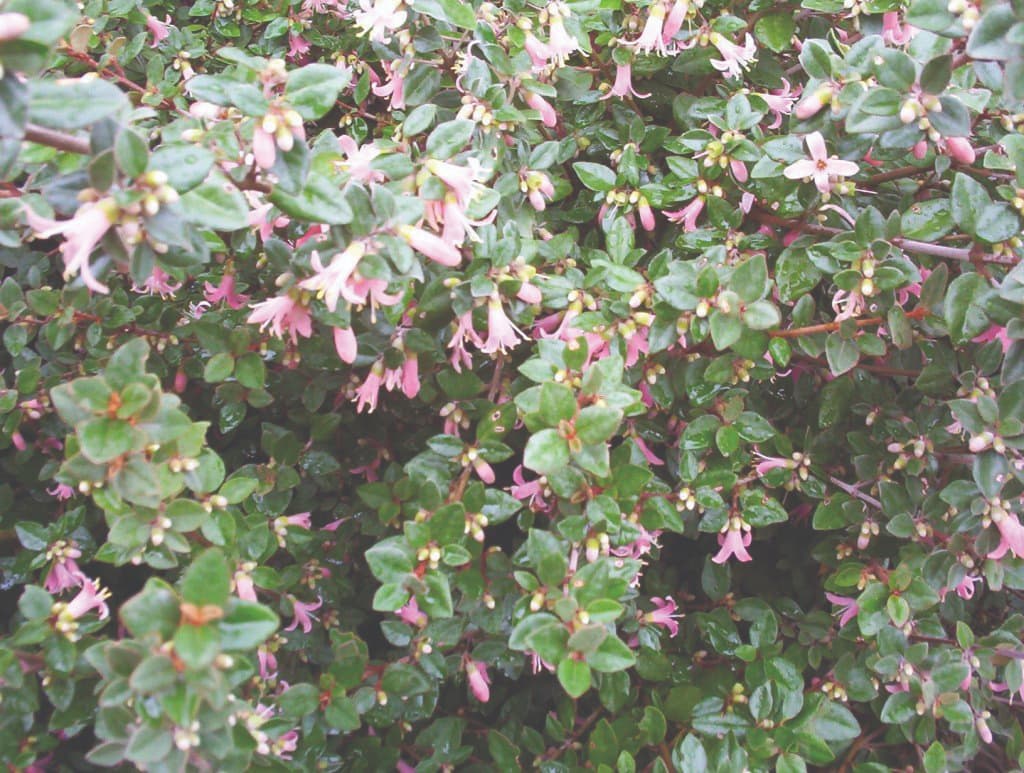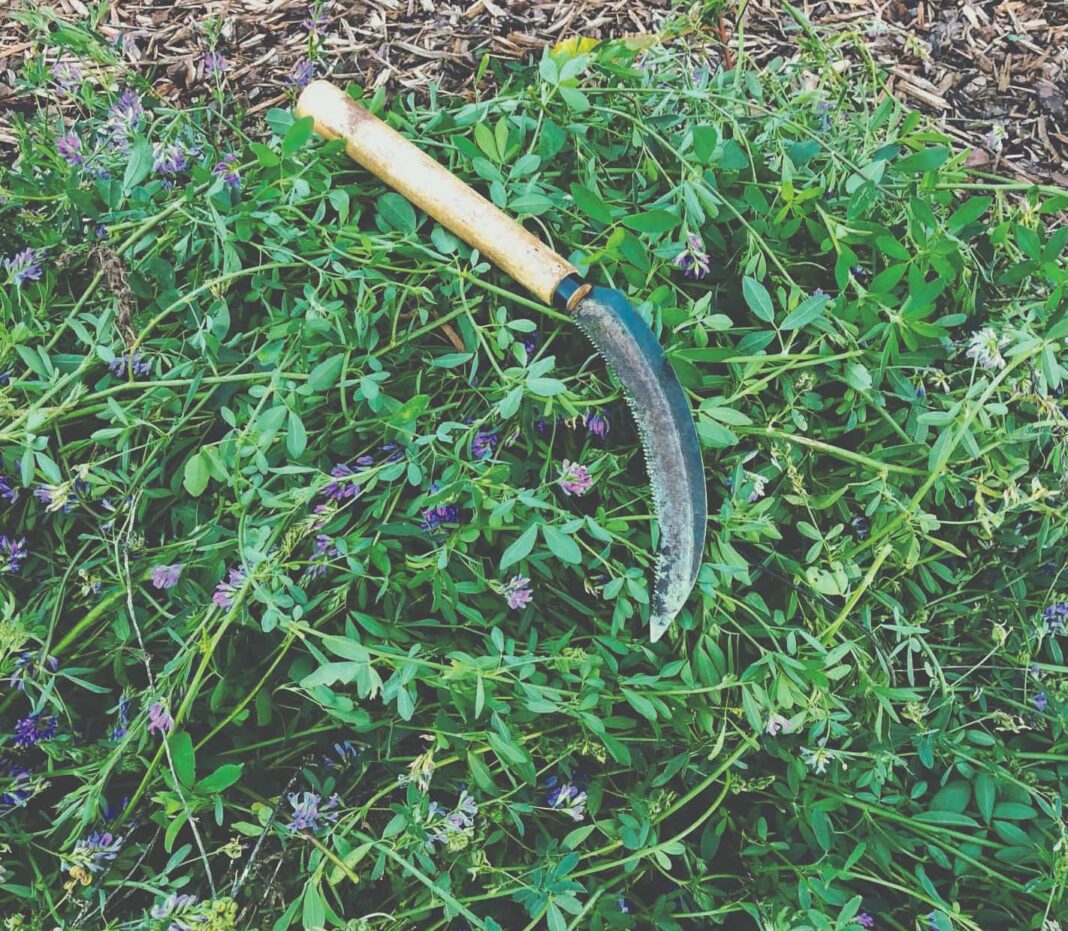Lucerne, also known as alfalfa and botanically known as Medico sativa, is an excellent green manure crop in the garden. A green manure crop is a fast-growing crop of an individual or mix of plant species, which is chopped at ground level once they have started to flower. Depending on the crop and situation, it can either be left on the surface as a nutritious mulch or it can be turned into the soil and planted into once it has decomposed.
Lucerne is a top choice as a green manure crop as it has a deep tap root, and it is a legume. Lucerne’s deep taproot means it is able to mine minerals from further down the soil profile, consequently making them available to more shallow-rooted plants.
Legumes, from the pea (Fabaceae) family, also have the ability to fix nitrogen in the soil, a mutually beneficial process where Rhizobium bacteria utilise carbon from plant roots and convert nitrogen in the air to a form readily available to plants. Leguminous green manure crops are sold with a compatible Rhizobium inoculant as the nitrogen-fixing nodules will not form without it.
Lucerne seed can be sown in spring or autumn in a friable organic soil at 1-2cm depth. Firm the soil to ensure good contact with the seed. Lucerne requires a soil pH of 5.5 or higher – add Dolomite lime to the soil to increase alkalinity if required. The soil also needs to be at least moderately well drained as it resents waterlogging. Once established, lucerne will tolerate periods of dry weather.
Lucerne can be grown as a crop (mass planting) or as individual specimens in the garden. A crop is an excellent method for preparing or rejuvenating garden beds, and individual specimens are handy in established gardens – just chop them back to ground level as needed to use in the garden or compost pile.
Small volumes of lucerne seed can be purchased from online suppliers such as Green Harvest www.greenharvest.com.au. It is also worth contacting local rural produce stores. You will often find lucerne plants growing wild on median strips and roadsides around Canberra if you fancy harvesting some yourself.
Correa ‘Pink Pixie’
Correa alba x pulchella ‘Pink Pixie’ is a lovely Australian native shrub which reaches approximately 1m high and wide. It has attractive mid-green foliage and masses of delicate pink, bell-shaped flowers, mostly in winter and spring (it has been spot flowering in my garden since mid-March). The flowers are particularly attractive to small nectar feeding birds such as the eastern spinebill. They are also popular with pollinators including honey and native bees.
As with many correas, Correa ‘Pink Pixie’ prefers a partly shaded spot with a well-drained soil. Fertilise with organic matter and fertilisers suitable for Australian natives, such as green waste compost and Healthy Earth. C. ‘Pink Pixie’ tolerates moderate frost and short periods of hot dry weather. Give a moderate prune after flowering to maintain shape and encourage vigour.
Correa ‘Pink Pixie’ is a valuable addition to both native and exotic gardens and is equally effective as a stand-alone specimen or mass planted.

For more:



